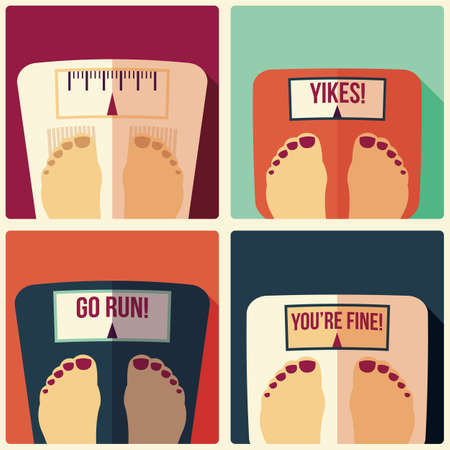1. Consulting Your Healthcare Team
If you’re planning to hit the trails after weight loss surgery, checking in with your healthcare team is the first step on your hiking journey. Weight loss surgery changes how your body works, so getting the green light from your doctor or bariatric specialist isn’t just a formality—it’s essential for your safety and success. Here’s what you need to know before lacing up those boots:
Why Medical Clearance Matters
Your body is still adjusting after surgery, and physical activity can affect healing, nutrition, and energy levels. A healthcare provider will help you understand what types of hikes are appropriate for you right now and what signs might mean you’re pushing too hard. Don’t be shy about sharing your hiking goals—your care team wants to help you get back outdoors safely!
Key Points to Discuss With Your Healthcare Providers
| Topic | Why It Matters | Questions to Ask |
|---|---|---|
| Physical Readiness | Ensures your body can handle increased activity without setbacks. | Am I cleared for moderate-intensity exercise like hiking? |
| Nutritional Needs | You’ll need enough fuel and hydration for safe hiking. | What snacks or drinks should I bring? How do I prevent dehydration? |
| Medication Adjustments | Some meds may need tweaking if you increase activity. | Do I need to adjust my medication before/after a hike? |
| Warning Signs | Knowing when to stop helps prevent injuries or complications. | What symptoms should make me turn back or seek help? |
Ongoing Communication Is Key
Your relationship with your healthcare team shouldn’t end once you get approval. Keep them updated as you increase distance, elevation, or frequency of your hikes. If something doesn’t feel right—whether it’s fatigue, pain, or digestive issues—reach out sooner rather than later. Think of your providers as your trail guides for this new chapter; they’re there to help you enjoy nature while staying healthy and strong.
2. Choosing the Right Trails
Picking a hiking trail that fits your current fitness level is key to having a positive experience, especially after weight loss surgery. Jumping into a challenging hike too soon can lead to frustration or even injury. Here are some tips for finding the perfect trail and making your outdoor adventure enjoyable and safe.
Start Small and Progress Gradually
After surgery, your body needs time to adjust to new activity levels. Begin with short, easy trails that offer gentle elevation and smooth paths. As your endurance builds, you can gradually increase the distance, elevation, and difficulty of your hikes. This slow progression helps prevent overexertion and allows you to celebrate each milestone.
Trail Difficulty Levels
| Difficulty | Description | Ideal For |
|---|---|---|
| Easy | Flat or gently rolling terrain; well-marked; less than 3 miles | Beginners, recovery stages post-surgery |
| Moderate | Some inclines; uneven surfaces; 3–5 miles | Building stamina, intermediate level |
| Difficult | Steep climbs; rocky or rough paths; 5+ miles | Advanced hikers, higher fitness levels |
Popular U.S. Beginner-Friendly Trails by Region
| Region | Trail Name | Description |
|---|---|---|
| West Coast | Muir Woods National Monument (CA) | Paved and flat trails among redwoods, great for beginners. |
| Midwest | Starved Rock State Park (IL) | Smooth walking paths with scenic overlooks. |
| Northeast | The Appalachian Trail (various short sections) | Select easy segments for gentle walks in nature. |
| Southwest | Piedra River Trail (CO) | Mild grades along riverside scenery. |
| Southeast | Cades Cove Loop (TN) | Paved loop with wildlife viewing opportunities. |
How to Pick Your First Trail After Surgery
- Check Local Parks: City and county parks often have paved or gravel walking trails perfect for new hikers.
- Look for Loops: Loop trails allow you to end where you started, so you don’t have to worry about doubling back if you get tired.
- Avoid Steep Elevation: Stick to flatter terrain until your strength and stamina improve.
- Read Reviews: Use apps like AllTrails or TrailLink to see recent reviews from other hikers about trail conditions.
Your Hiking Progress Plan
| Stage After Surgery | Mileage Goal per Hike | Slope/Elevation Guidance |
|---|---|---|
| First Month Cleared for Exercise | 0.5–1 mile | No steep hills; mostly flat terrain |
| Months 2–3 | 1–2 miles | Slight rolling hills allowed |
| Month 4 and Beyond | 2+ miles as tolerated | Add moderate inclines gradually |
Tip:
If possible, bring a friend or family member along for encouragement and safety on your first few hikes. Always listen to your body and be proud of every step forward!

3. Nutrition and Hydration Essentials
Guidelines for Staying Fueled on the Trail
After weight loss surgery, your body processes food and fluids differently. Hiking adds extra demands, so it’s important to plan ahead for both nutrition and hydration. Here’s how you can safely enjoy the trail while meeting your post-surgery needs:
Addressing Post-Surgery Dietary Needs
- Eat Small, Frequent Meals: Instead of three large meals, bring several small snacks to eat every 1-2 hours.
- Focus on Protein: Protein helps maintain energy and muscle mass. Look for high-protein snack options that are easy to pack and digest.
- Avoid Sugary and Fatty Foods: These can cause dumping syndrome after surgery. Stick to foods you know sit well with you.
- Watch Portion Sizes: Pack pre-portioned snacks so you don’t overeat or feel uncomfortable.
Convenient American Packable Snacks
| Snack | Description | Why Its Great for Post-Surgery Hikers |
|---|---|---|
| Tuna or Chicken Packets | Single-serve protein packs, often found at grocery stores. | High in protein, no refrigeration needed, easy to open on the go. |
| String Cheese or Babybel Cheese | Individually wrapped portions of cheese. | Good source of protein and calcium, portion-controlled. |
| Greek Yogurt (shelf-stable tubes) | Shelf-stable yogurt pouches found in many American supermarkets. | Creamy texture, rich in protein, easy to digest. |
| Nuts (almonds, cashews) | Small snack bags or single-serve packets of nuts. | Packed with healthy fats and protein; just watch portion size. |
| Protein Bars (low sugar) | Bariatric-friendly brands or low-sugar options like Quest or RXBAR. | Portable, filling, designed for steady energy release. |
| Dried Edamame or Chickpeas | Crispy roasted legumes available in snack-size bags. | Cruelty-free protein option, high fiber keeps you fuller longer. |
| Sliced Turkey Jerky (low sodium) | Look for nitrate-free and low-sodium varieties. | Lean protein that travels well; chew slowly to aid digestion. |
Hydration Strategies for the Trail
- Sip Water Regularly: Don’t wait until you’re thirsty—sip small amounts of water every 10-15 minutes. Carry a reusable water bottle or hydration bladder for convenience.
- Avoid Sugary Drinks: Stick to plain water or add a sugar-free electrolyte powder if you’ll be sweating a lot. Avoid sodas and sugary sports drinks which can upset your stomach post-surgery.
- No Gulping: After weight loss surgery, it’s important not to gulp liquids. Take small sips to avoid discomfort or nausea.
- Pace Your Fluids: If you need to eat and drink close together, wait at least 30 minutes after eating before drinking again. This helps prevent feeling overly full or bloated on your hike.
Quick Reference: Hydration & Snack Packing Tips
- Packing Tip: Use a small cooler bag or insulated pouch to keep perishable snacks safe during warm hikes.
- Taste Test Beforehand: Try all snacks at home before your hike to make sure they agree with your stomach post-surgery.
- Stay Prepared: Carry extra snacks and water in case your hike takes longer than planned or you need a little more fuel along the way!
4. Packing Smart and Staying Safe
Essential Gear for Post-Surgery Hikers
Hiking after weight loss surgery means making thoughtful choices about what to bring. Lightweight, functional gear is key to comfort and safety on the trail. Here’s a simple checklist tailored for hikers who have undergone weight loss surgery:
| Item | Why It Matters |
|---|---|
| Hydration Pack or Water Bottle | Staying hydrated is crucial, especially since your body may process fluids differently after surgery. |
| Nutrient-Dense Snacks | Pack easy-to-digest, high-protein snacks like protein bars or nuts to maintain energy without upsetting your stomach. |
| Lightweight Backpack | A pack with padded straps distributes weight comfortably, reducing strain on your back and shoulders. |
| First Aid Kit | Include bandages, antiseptic wipes, and any medications you need post-surgery. |
| Trekking Poles | Offer extra stability on uneven trails and reduce joint impact. |
| Sunscreen & Bug Spray | Protects sensitive skin that may be more vulnerable after surgery. |
| Emergency Whistle/ID | For safety—let others know where you are in case of emergency. |
Dressing Right: Clothing Tips for Comfort and Protection
- Moisture-Wicking Layers: Choose breathable fabrics to help regulate your temperature and prevent chafing, which can be more common post-surgery.
- Supportive Footwear: Wear sturdy hiking boots or trail shoes with good ankle support and cushioning. Your balance and gait might change after weight loss surgery.
- Weather-Appropriate Outerwear: Pack a lightweight rain jacket or windbreaker. Weather can change quickly in many American hiking destinations.
- Hat & Sunglasses: Protect yourself from sun exposure, as your skin might be more sensitive post-surgery.
Safety Practices on the Trail
Know Before You Go
- Check the Weather: Always check the forecast before heading out and adjust your packing list accordingly.
- Select Suitable Trails: Start with well-marked, low-elevation trails familiar to local hikers, such as city parks or national recreation areas like those found across the U.S.
- Pace Yourself: Listen to your body and take frequent breaks—your endurance may be different after surgery.
- Share Your Plans: Let someone know your route and expected return time—a practice known as “leaving a trip plan” in American hiking culture.
Trail Etiquette Familiar to American Hikers
- Stay on Marked Trails: Protect nature and avoid getting lost by sticking to established paths.
- Yield Right-of-Way: Uphill hikers have the right-of-way; step aside when descending if you meet someone coming up.
- “Leave No Trace”: Pack out all trash, including food wrappers and used tissues. Respect wildlife by observing from a distance.
- Keen Awareness: Listen for bikers or horseback riders—move aside safely as needed. Common courtesy goes a long way on busy American trails!
Packing smart and following these safety guidelines ensures you’ll enjoy every hike while taking care of your post-surgery needs. With the right preparation, you can confidently explore America’s beautiful outdoors!
5. Embracing the Social and Emotional Benefits
How Hiking Supports Mental Wellness After Surgery
After weight loss surgery, your journey goes beyond just physical changes—your mind and emotions are on a new adventure too. Hiking is more than exercise; it’s a powerful way to boost your mood, reduce stress, and help you feel confident in your body’s abilities. The fresh air, beautiful views, and peaceful sounds of nature can help clear your mind and lift your spirits.
Benefits of Hiking for Your Mind
| Mental Health Benefit | How Hiking Helps |
|---|---|
| Reduces Stress & Anxiety | Being outdoors lowers stress hormones and encourages relaxation |
| Boosts Confidence | Achieving trail goals helps you believe in your new strength |
| Improves Mood | Physical activity releases “feel good” endorphins in your brain |
| Encourages Mindfulness | The sights and sounds of nature help you stay present and enjoy the moment |
Building Community Through Local Hiking Groups
One of the best parts of hiking after weight loss surgery is connecting with others who share your passion for the outdoors. In America, many people join local hiking clubs or MeetUp groups to make new friends, find encouragement, and share their progress. These groups are friendly, supportive, and welcome hikers of all levels—including those just starting out after surgery.
How to Find a Local Hiking Group
- Check social media: Look for Facebook groups or local pages dedicated to hiking in your area.
- Visit MeetUp.com: Search for beginner-friendly hiking events near you.
- Ask at outdoor stores: Many REI or local gear shops host group hikes and classes.
- Talk to your healthcare team: Some hospitals have support groups that organize outdoor activities.
Celebating Milestones—The American Way!
A big part of American culture is celebrating achievements together. Whether it’s completing your first one-mile hike post-surgery or reaching a scenic summit, don’t be shy about marking these moments! Invite friends or family along for a “milestone hike,” take a group selfie at the trailhead, or even pack a healthy picnic to enjoy at the finish line. Many hikers like to collect badges, stickers, or custom t-shirts as fun reminders of their accomplishments.
Fun Ways to Celebrate Your Hiking Successes
- Create a hiking journal: Write down each hike, how you felt, and what you enjoyed most.
- Share on social media: Post photos or updates to inspire others—and get some virtual high-fives!
- Treat yourself: Buy new hiking socks or gear when you reach personal goals.
- Organize group hikes: Bring people together for themed hikes—like “First 5K Trail Walk” or “Sunrise Summit.”
The social and emotional benefits of hiking can turn your recovery into an uplifting adventure—helping you build confidence, friendships, and lasting happiness as you discover what your body can do.


